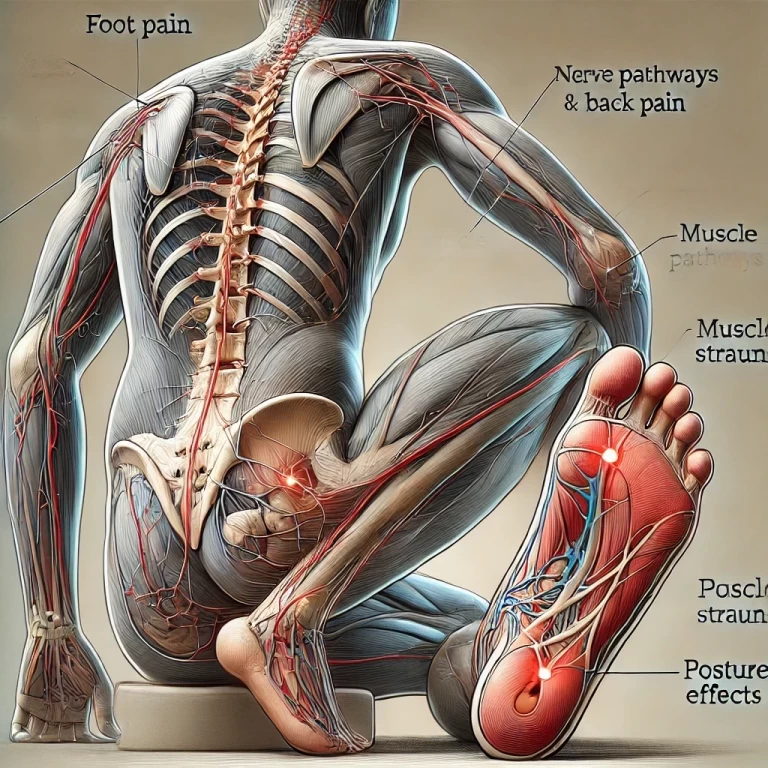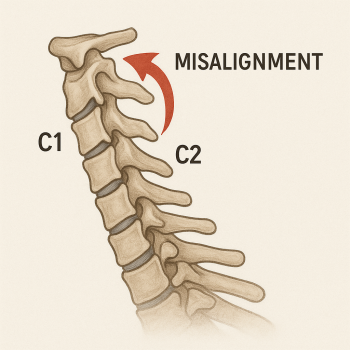
If you are suffering from Fibromyalgia, you know how difficult it can be to live with the pain and fatigue that comes with this condition. You may have tried traditional chiropractic care, but found that it didn't help as much as you had hoped. Upper cervical chiropractic may be a better choice for you. This specialized form of care focuses on the craniocervical junction, which is the area where the skull and spine meet. If this area becomes misaligned, it can cause problems with nerve function and lead to a variety of health issues. Upper cervical chiropractors are specially trained to identify and correct misalignments in the craniocervical junction, which is the area where the skull and spine meet.
What is Fibromyalgia?
Fibromyalgia (FM) is often categorized as a diagnosis of exclusion, meaning the causes are unknown and a diagnosis is often reached once all other options have been explored and ruled out. In its clinical presentation, Fibromyalgia is described as a central sensitivity syndrome with hallmark symptoms related to abnormal processing of the central nervous system. New research is uncovering the connection between the central nervous system and the immune system in the inflammatory processes underlying chronic pain, fatigue, and cognitive changes which are classic signs of Fibromyalgia.
The exact cause of Fibromyalgia is still unknown, but it is believed to be the result of a combination of genetic and environmental factors. While there is no definitive test for Fibromyalgia, the diagnosis is generally made after ruling out other possible causes and taking into account a person's symptoms, medical history, and family history.
5 tips for lifestyle changes that can help you with Fibromyalgia
There are a number of lifestyle changes you can make to help you cope with fibromyalgia. Here are five tips:
1. Get enough sleep: Fatigue is one of the most common symptoms of fibromyalgia, so it’s important to get enough sleep. Most people with fibromyalgia need at least eight hours of sleep per night.
2. Exercise: Exercise can help reduce pain and fatigue, and improve sleep quality. However, it’s important to start slowly and not overdo it, as too much exercise can actually make symptoms worse.
3. Eat a healthy diet: Eating a healthy diet is important for everyone, but it’s especially important for people with fibromyalgia. Eating a balanced diet can help reduce symptoms and improve overall health.
4. Reduce stress: Stress can trigger or worsen symptoms of fibromyalgia, so it’s important to find ways to reduce stress in your life. Meditation, yoga, and deep breathing exercises can all help reduce stress levels.
5. Make sure you get enough vitamin D: Vitamin D deficiency is common in people with fibromyalgia, and research suggests that getting enough vitamin D can help reduce symptoms. The best way to get vitamin D is by spending time in the sun.
The Connection between the Central Nervous System and the Immune System
Recent research has begun to shed light on the connection between the central nervous system and the immune system in the development of Fibromyalgia. It is now believed that chronic inflammation plays a role in the pain, fatigue, and cognitive changes seen in people with Fibromyalgia. This inflammation is thought to be caused by an overactive immune system response to stressors like infection, trauma, or psychological stress. This central nervous system shutdown is thought to be caused by inflammation. Research suggests that a specific type of upper cervical adjustment may help to reduce this inflammation and improve symptoms in Fibromyalgia patients.
The connection between the central nervous system and the immune system is becoming increasingly clear as researchers explore the underlying causes of chronic pain, fatigue, and cognitive changes. The central nervous system plays a role in regulating the immune system, and when this regulatory process is disrupted, it can lead to inflammation and pain. A growing body of evidence suggests that Fibromyalgia may be caused by an overactive immune system and that upper cervical adjustments may help to reduce inflammation and pain by restoring proper communication between the central nervous system and the immune system.
How Upper Cervical Adjustments Can Help Fibromyalgia Patients
Upper cervical chiropractors use a gentle method of care to address the upper cervical spine. Upper cervical adjustments can help improve the quality of life for fibromyalgia patients in several ways and reduce pain and inflammation throughout the body. Secondly, upper cervical adjustments can help improve sleep quality and quantity. Finally, upper cervical adjustments can help restore proper function to the nervous system. When the nervous system is functioning properly, the body is able to better heal itself and reduce pain levels. If you suffer from fibromyalgia, consider talking to an upper cervical chiropractor about how care can help you find relief. Upper cervical adjustments may help to reduce inflammation and pain by restoring proper communication between the central nervous system and the immune system.
Conclusion
Overall, upper cervical adjustment is a much gentler and more effective method of care for those suffering from fibromyalgia. By correcting the source of the misalignment, upper cervical chiropractors can provide lasting relief from symptoms associated with fibromyalgia. If you or someone you know suffers from this debilitating condition, consider seeking out upper cervical chiropractic care. It just might be the answer you’ve been looking for.
We use the Blair Technique, a specific chiropractic approach that detects and corrects atlas misalignments. Through specific realignment of the atlas, there is reduced pressure on the spinal cord. This allows for proper signals to be sent to and from the brain. This may lead to a reduction in fibromyalgia symptoms.
The Blair Technique is a gentle and effective way to realign the atlas. This can often be done without the use of force or manipulation. The technique uses precise instruments to measure the misalignment and then a gentle adjustment is made to correct it. Thank you for reading! I hope this article has helped to educate you on the benefits of upper cervical adjustment for those suffering from fibromyalgia. If you have any questions, give us a call, I’d be happy to answer them to the best of my ability. Thanks again, and good luck on your journey to wellness!






Leave a comment